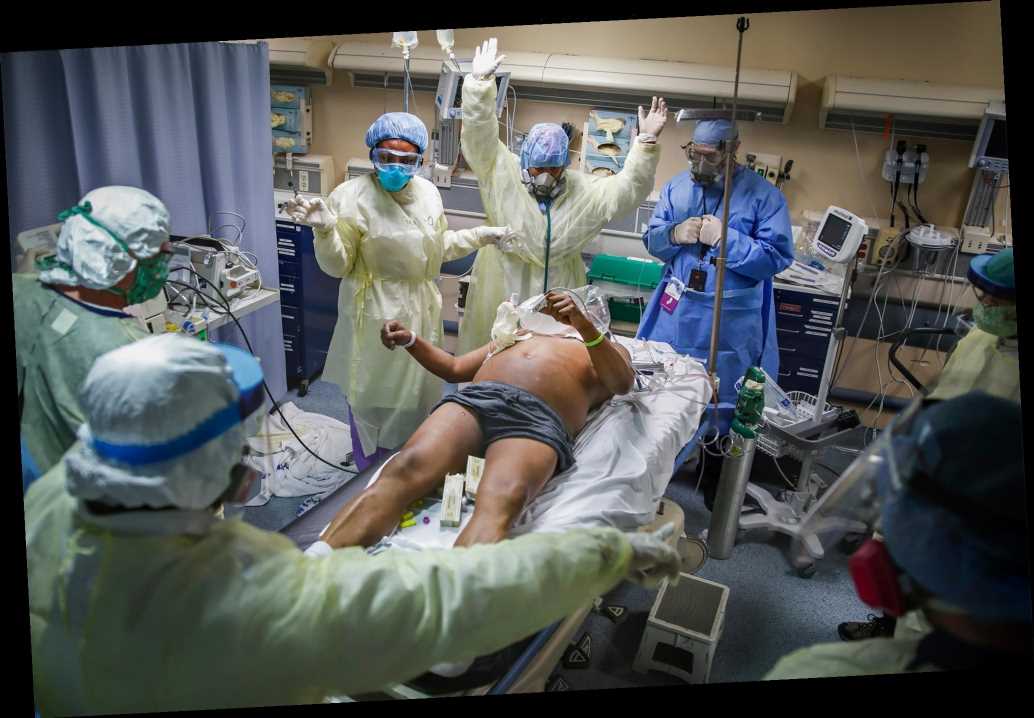YONKERS — A nurse furiously pushes down on a man’s chest as five other caregivers in full protective gear surround the patient’s bed.
Suddenly, one throws up his arms and steps backward.
“OK, move! Everybody move!” are the instructions.
Moments after they back away, an alarm sounds and the electrodes fastened to the patient’s chest deliver a shock to his heart. His arm spasms. He shakes on the bed. Soon after, he is placed on a ventilator. He has been saved — for now.
Many more at Saint Joseph’s Medical Center have not.
“It’s been a nightmare. We have a volume of sick people like you can’t believe. In one shift, I pronounced six people dead,” said Dr. Anthony Leno, the hospital’s director of emergency medicine, who before the outbreak on average pronounced one dead in a 10-12 hour shift.
The Yonkers hospital, which sits near the Bronx border and serves one of the poorest sections of Westchester County’s largest city, has been besieged by the new coronavirus. Half of the approximately 280 staff members who were tested for the disease were positive — with another 25 to 30 still awaiting results, according to Dean Civitello, the vice president for human resources.
The Associated Press was granted access to the facility’s emergency room, which at one point earlier in the pandemic had 28 patients waiting to be treated and ambulances lined up outside with more, said Dr. James Neuendorf, Saint Joseph’s medical director.
Staff from other areas of the hospital was redeployed to manage patients and additional treatment areas were set up to augment the hospital’s 194 acute-care beds.
The adjustments meant “we were able to take care of a large number of patients — well over above our numbers that we normally see on a daily basis,” Neuendorf said.
More than 900 have died in Westchester, which had an early outbreak in neighboring New Rochelle in March before Yonkers became a hot spot. At Saint Joseph’s, coronavirus-related symptoms accounted for more than 85% of all admissions for a period of nearly four weeks from March 20 to April 19.
Officials at the hospital knew the pandemic was going to crush them, since COVID-19 has proved particularly punishing for the largely minority population that makes up a significant portion of southwest Yonkers.
One particular challenge is that large families frequently live together in small homes, making it difficult to isolate sick ones. And, Leno noted, there have been few effective therapies other than isolation.
“We’ve had many family members and groups, and we’ve even had people from the same family who have died within days of each other,” Leno said.
The community was hit so hard that a tent was erected outside the hospital on March 19 to accommodate the rush of people seeking to be tested. In the first few days it was up, 150 to 175 people were examined each day to determine who should be tested, according to Catherine Hopkins, Saint Joseph’s director of school health and community relations.
Even some in the area who may otherwise be reluctant to seek medical care, fearing the loss of pay or in some cases deportation, showed up after seeing the effects of the coronavirus.
View Slideshow
Source: Read Full Article





